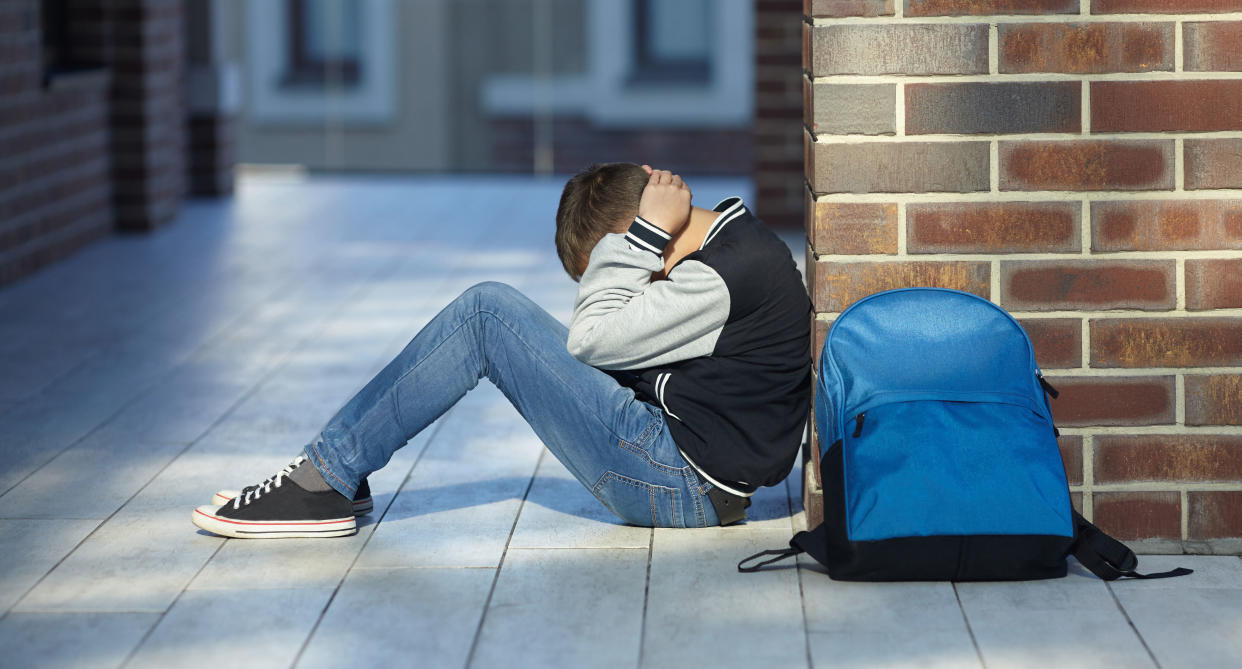'The numbers are very alarming': More kids taken to hospital for suicidal thoughts and attempts than ever before

Warning: This story contains mention of suicide and suicidal ideation.
The number of children and teenagers taken to hospital for suicidal ideation and attempted suicide is on the rise, according to a new study.
Earlier this week, JAMA Pediatrics published an analysis of emergency room visits in the United States where children and teens between the ages of 5 to 18 complained of, or were diagnosed with suicidal ideation (SI) or suicide attempt (SA).
ALSO SEE: Canadian reporter reveals battle with kidney failure: Are you at risk?
Using data from the National Hospital Ambulatory Medical Care Survey, researchers determined that the number of children and teens diagnosed with SI or SA had doubled from approximately 580,000 in 2007, to 1.12 million in 2015.

According to research, the average age of children evaluated was 13 years old, however nearly 43 per cent of all cases occurred in kids between the ages 5 and 11.
“The numbers are very alarming,” Dr. Brett Burstein, the lead study author and a pediatric emergency room physician at Montreal Children’s Hospital of McGill University Health Centre said in an interview with CNN. “It also represents a larger percentage of all pediatric emergency department visits. Where suicidal behaviour among the pediatric population was just 2 per cent of all visits, that’s now up to 3.5 per cent.”
For child psychologists, the results echo what they’ve known for years.
ALSO SEE: Parenting during the pediatric anxiety epidemic
“We know that suicide and depression have been rising significantly,” Dr. Gene Beresin, executive director of The Clay Center for Young Healthy Minds at Massachusetts General Hospital and professor of psychiatry at Harvard Medical School told CNN.
Although not involved in the study, Beresein said the rise may have something to do with kids feeling more pressure than ever before.
“Kids are feeling more pressure to achieve, more pressure in school, and are more worried about making a living than in previous years,” he explained.

Also worth noting said Beresein, is the increase in stress for parents and caregivers, which in turn gets passed on to children. He notes that suicide rates have steadily increased across all ages for the past 20 years.
A separate study published earlier this year suggests that at least half of all children and teens in the United States who suffer from mental health issues will likely go untreated.
Although focused on U.S. data, experts say it’s difficult to assume the same increase is occurring in Canada.
ALSO SEE: Sarah Hyland revealed she had suicidal thoughts after kidney transplant failed – and she’s not alone
“The answer we would like to say is we can just look at the numbers and just read them, but it’s still much more complicated than that. The biggest issue in suicide period is stigma,” Mara Grunau told Global News. “But when it comes to specific groups — and children would top the list — the stigma is significant.”
As the executive director of the Centre for Suicide Prevention (CSP), Grunau said there is evidence that more children are presenting with suicidal thoughts, but it’s possible that it’s because they are more aware of it compared to other generations.

“What’s really changed? Is it our perspective or is that behaviour? We don’t know,” she explained.
Mental health experts have been talking about child suicide for decades, Grunau said, however their warnings fell on deaf ears. The common belief was that if children did die, it was unintentional.
“We published a handbook almost a decade ago that was the first of its kind, and people refused to engage with [it],” said Grunau. “They said, ‘no, children do not understand the permanency of death and therefore could not understand suicide.’”
While the exact cause in the rise of child and teen suicide is unknown, Grunau said it’s important to have open conversations about suicide and mental health. Simply talking about it she explains, won’t encourage children to attempt or commit suicide.
ALSO SEE: Meghan Markle warns of the effect social media has on young people’s mental health
“Suicide is not a subjective behaviour. Just talking about suicide does not incite the idea if [the child or teen] is not already at risk,” she said.
Grunau even offered advice for parents on how to approach the topic, or field their child’s questions which may sometimes be uncomfortable.
“You have to be persistent and calm about it in different ways to try and maintain that openness and trust, so that they know when things are really bad they’re willing to tell you,” she advised. “When they do tell you something, hold it. Don’t jump in on it and don’t judge them, you don’t want to ruin that trusted relationship.”
For more information visit the Centre for Suicide Prevention.
In the event of an emergency, call 911 for immediate assistance.
Resources are available for children, teens and adults who may be thinking of suicide and in need of help. Call the Canada Suicide Prevention Service at 1-833-456-4566.
Don’t feel like talking on the phone? Text CONNECT to 686868 to reach the Crisis Text Line powered by Kids Help Phone.
Let us know what you think by commenting below and tweeting @YahooStyleCA!
Follow us on Twitter and Instagram.
Check out Yahoo Canada’s podcast, Make It Reign — our hot takes on all things royals in a non-stuffy way — on Apple Podcasts and Google Podcasts.



